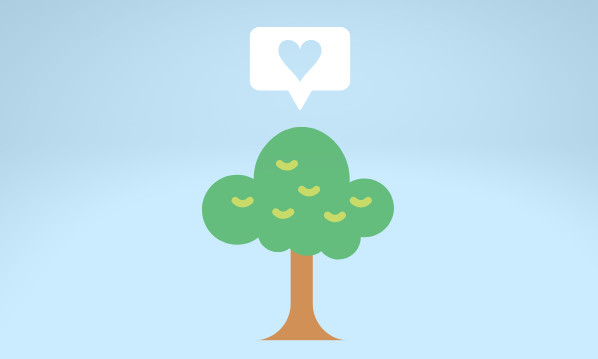Instagram is a visual social media platform. Very visual.
It’s a place for sharing makeup looks, dank memes, glamorous holidays, your avocado-featuring lunch and millions of selfies.
Small businesses that offer beautiful products, like jewellery designers and artists, have done incredibly well from Instagram, often without even paying for advertising. It’s a platform that feeds our acquisitiveness, our keeping-up-with-the-Joneses instinct. We’ve shared our top tips on how to make the Instagram algorithm work for your business.
But what if you sell fertiliser? What if you have a plant hire business? How do you make accounting ‘Instagrammable’? I’m glad you asked.
5 Instagram ideas for businesses without an aesthetic product
1. Your people
Humans love humans – it’s nature. If your business isn’t bursting with stunning products and beautiful magazine spreads, your people are your content.
What jobs do they do? What funny stories do they have of their years in the business? Has someone run a marathon for charity or baked branded cupcakes?
Look around your office and try to visualise the stories it tells, no matter how small your business may be. Whatever you’ve got, do a quick bit of research into the hashtags you could use to publicise it.
- Doing stuff for charity – #rednoseday #charitytuesday #smallcharitiesweek
- Challenging a bias in your industry – #thisgirlcan #STEMinism #applaudher
- Making a pledge – #workgreen #carfreeday #Earthday
- Joining in with a social craze – #mannequinchallenge #icebucketchallenge #nomakeupselfie
2. Your product being used by customers
There is no better marketing than no marketing at all; no artifice.
A happy customer using your product is the best testimonial you can get because you (the biased money-maker) have not created it, so it’s trustworthy.
- Your product at work in your customers’ environments
- The results your customers have had with your service
- Quotes from testimonials you’ve received
3. Industry-related updates
Keeping up with what’s going on in your industry or the industries of your customers makes you one of the gang. Addressing hot topics like new laws or stories in the media means you look up-to-date and your content will always be interesting.
As it’s your field, you’ll probably be reading this stuff anyway. Turning it into a quick Instagram post is an easy habit to get into and if you use the same format for news every time, a really quick idea to implement as well.
- New legislation announcements from the government
- Weather-related warnings
- Coverage of relevant surveys or studies
- Controversial industry subjects featuring in the media
- In-jokes that connect with your audience’s emotions and sense of being part of the club
4. Your audience’s opinions
If you’re trying to grow your Instagram engagement, it’s pretty likely you’ve already had success with other social media platforms. Use these to gather information you can turn into ideas for Insta content.
One of my faves is Twitter polls. If something big is going on in your industry or the world in general (if it’s relevant!), run an eye-catching poll to show your followers you care about their opinions. It’s the easiest, quickest and cheapest way to generate a story based on numbers.
- What did your audience think of the latest industry stat?
- Do they agree with the proposed legislation coming up?
- What’s their least favourite thing to do that [your product] solves?
You’ll get a result to turn into an Instagram post but it could also be used for a blog or in a report. It’s survey data you have that other people don’t.
5. Your data
You’ve got something no one else has: your own internal data.
The number of ukeleles your small business sells each year. The proportion of people who miss the deadline for submitting their expenses each tax season. The proportion of home swimming pools across the UK (check out that Surrey hotspot!).
You might not know right now what data your business has and who’s got it but I promise it’s there. And EVERYTHING is an interesting story waiting to happen.
- Stats on buying patterns – when, what, why?
- Where your customers are on a map
- Trends in your customer demographics or industries
- Your ‘top’ customers from their results with your product
- Growth in popularity of services or spending
This is the kind of data you should be checking you can get hold of. The INTERESTING stuff comes from finding patterns that tell a cool story. You could even tell your story as an ‘Instagram Story’ by following our guide on how to use Instagram Stories for business.
Into it? Try making your own social media graphics with Canva.
This article was originally published on 27 February 2017, and updated on 30 November 2021.






